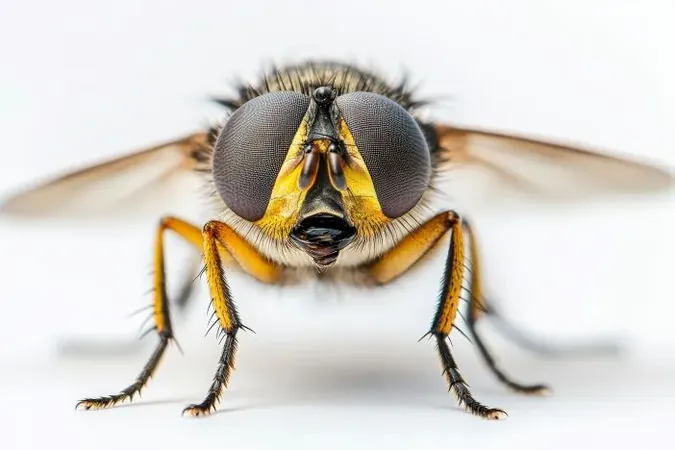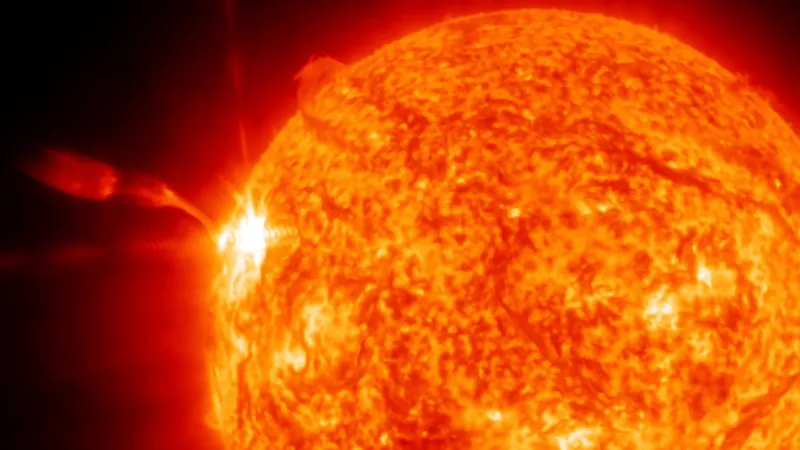
Revolutionary High-Speed Camera Inspired by Insect Eyes Developed in South Korea!
2025-01-20
Author: Yu
Introduction
In an exciting breakthrough, researchers at the Korea Advanced Institute of Science and Technology (KAIST) have developed a cutting-edge camera that takes inspiration from the sophisticated visual systems found in insect eyes. This groundbreaking technology seeks to eliminate the persistent limitations of frame rates and sensitivity that traditional high-speed cameras face, offering a new realm of possibilities for various applications, particularly in low-light environments.
Camera Specifications and Capabilities
The newly engineered camera, measuring less than one millimeter in thickness, is not only compact and cost-effective but is also capable of capturing an astonishing 9,120 frames per second. This capability ensures that clear images can be produced even under challenging low-light conditions—a significant achievement that unlocks potential uses in fields like medical imaging and security surveillance.
Challenges in Traditional High-Speed Cameras
Traditionally, high-speed cameras excel in capturing quick motions; however, they often struggle with light sensitivity as frame rates increase. For instance, while the world's fastest camera can shoot at an astronomical 156.3 trillion frames per second, the very speed compromises its ability to gather enough light.
Bio-Inspired Design
In contrast, the innovative design of this new camera mimics the compound eyes of insects, which detect rapid movements through parallel processing. Insect eyes enhance sensitivity by integrating light signals over time, thus allowing for better motion detection in dim lighting.
Research Achievements and Capabilities
The KAIST research team has successfully translated these biological principles into a functional camera. Their bio-inspired design incorporates multiple optical channels and a compound-eye-like structure, enabling the simultaneous acquisition of images from various time intervals. This system cleverly overlaps light accumulation over different frames, resulting in an impressive increase in the signal-to-noise ratio.
Performance and Testing
In rigorous testing, the bio-inspired camera demonstrated remarkable capabilities, able to capture images of objects 40 times dimmer than those detectable by conventional high-speed cameras. Moreover, the team implemented a channel-splitting technique to further boost the camera's speed, achieving frame rates thousands of times faster than typical image sensors.
Innovation in Image Clarity
To combat the blurring that can occur during frame integration, researchers employed an advanced compressed image restoration algorithm, successfully reconstructing sharp, clear images.
Future Developments and Applications
Looking towards the future, the KAIST team plans to refine this technology further by developing advanced image processing algorithms aimed at enabling 3D imaging and super-resolution techniques. The possibilities for this innovative camera are vast and varied, with potential applications anticipated across mobile devices, portable camera systems, and even space exploration, where capturing precise imagery under extreme conditions is crucial.
Conclusion and Expert Commentary
Hyun-Kyung Kim, a doctoral student at KAIST's Department of Bio and Brain Engineering and the study's lead author, expressed her enthusiasm about the project: “We have experimentally validated that the insect-eye-inspired camera delivers outstanding performance in high-speed and low-light imaging despite its small size. This camera opens up possibilities for diverse applications in portable camera systems, security surveillance, and medical imaging.”
As we stand on the brink of this next wave of imaging technology, it’s clear that the fusion of biology and engineering could lead to innovations we are only beginning to imagine. Keep an eye out for this remarkable advancement in the world of photography and imaging technology!



 Brasil (PT)
Brasil (PT)
 Canada (EN)
Canada (EN)
 Chile (ES)
Chile (ES)
 Česko (CS)
Česko (CS)
 대한민국 (KO)
대한민국 (KO)
 España (ES)
España (ES)
 France (FR)
France (FR)
 Hong Kong (EN)
Hong Kong (EN)
 Italia (IT)
Italia (IT)
 日本 (JA)
日本 (JA)
 Magyarország (HU)
Magyarország (HU)
 Norge (NO)
Norge (NO)
 Polska (PL)
Polska (PL)
 Schweiz (DE)
Schweiz (DE)
 Singapore (EN)
Singapore (EN)
 Sverige (SV)
Sverige (SV)
 Suomi (FI)
Suomi (FI)
 Türkiye (TR)
Türkiye (TR)
 الإمارات العربية المتحدة (AR)
الإمارات العربية المتحدة (AR)